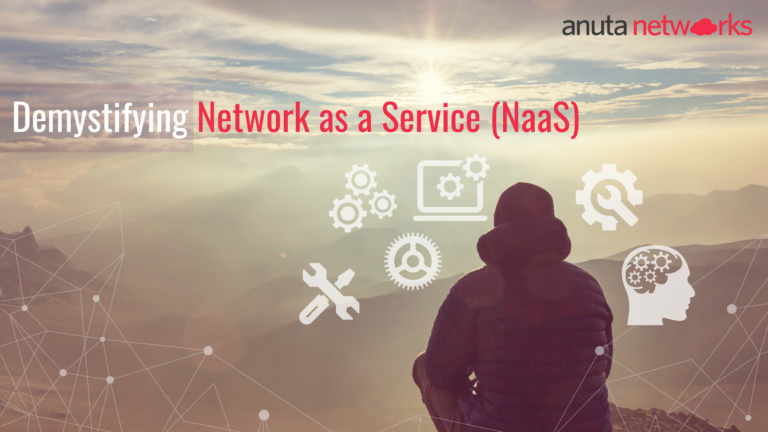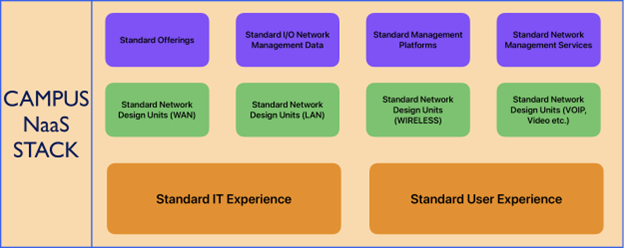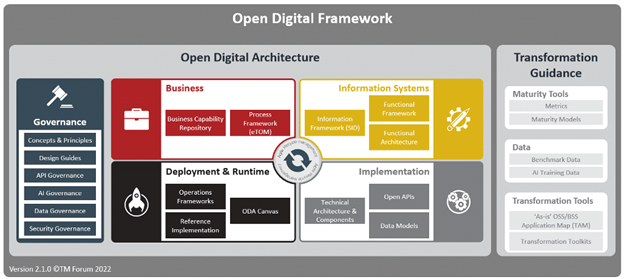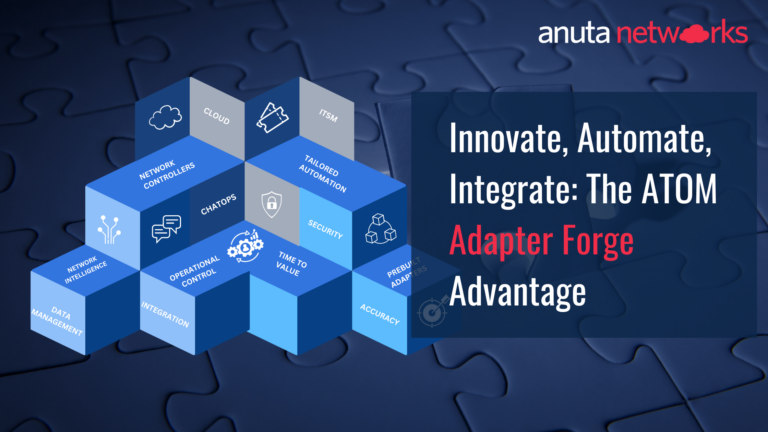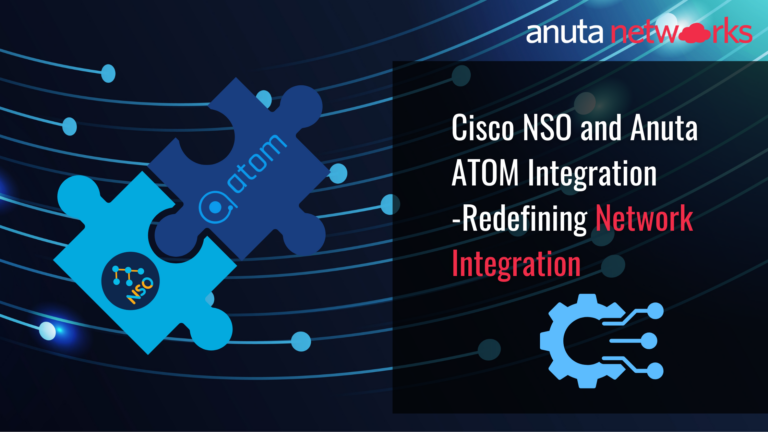Introduction
The time when companies were happy with just converting every job, process, or task into its digital twin has passed. We are now living in the “post-digital” era, and a recent report from Accenture coined the term. In the post-digital era, we have to take further steps to enable the interworking of digitized systems. When applying this concept to enterprise and communication service provider (CSP) networks, the result is Networking as a Service (NaaS). In this blog, we will explore two flavors of NaaS – Campus NaaS and CSP NaaS.
Situation Analysis
The trend in the IT industry as a whole is towards an “asset-light” framework. Freeing the enterprise from the burden of asset maintenance and lifecycle management can reduce capital expenditure levels that require complicated depreciation schemes. It also allows specific infrastructure providers to take ownership of the underlying assets and the lifecycle management. This enables these asset provider companies to optimize asset usage by the sheer scale they offer to their customers. This concept has built giants like AWS, Microsoft Azure, Google Cloud Platform, Oracle Cloud Infrastructure, and more.
We should also look at the optimization they have been able to build. These companies have done an outstanding job of understanding their customer demands and building services around them. They offer solutions and services for compute-heavy loads (Ex: Azure Virtual Machines, Google Compute Engine), storage-heavy loads (Ex: Amazon S3, Google Persistent Disk), etc., which are all examples of optimization for the customer needs. We cannot conclude the optimization discussion without discussing how these companies can deliver these solutions and services. Today, if you want to deploy a VM or containers or complete applications in the cloud, you will be given several ways. You can establish several types of VPNs between your local site and your cloud infrastructure and leverage APIs, GUIs, CLIs, etc., to deploy and manage the complete lifecycle of your cloud infrastructure and your applications.
In summary, these companies have not only provided enterprises with optimized, scalable infrastructure solutions but also the ability to focus on building more creative products for their customers by leveraging offerings, services and infused layers of automation.
This revolution has ushered in IaaS (Infrastructure as a Service), PaaS (Platform as a Service), and SaaS (Software as a Service). A similar revolution is happening in the network infrastructure space with NaaS and CaaS (Connectivity as a Service). Now let’s turn to a deeper explanation of Campus NaaS and CSP NaaS.
What is Campus NaaS?
Campus NaaS can be best categorized as the enterprise version of NaaS. From a network point of view, some companies or organizations would not exist in the absence of networks. This would include most IT, modern financial services, and telecommunications. Now enterprises like VISA, Mastercard, Capgemini, SAP, and many more, which fall in this category, need more control of their network in terms of security and ensuring high quality of service to their customers. These companies, in our view at Anuta Networks, cannot depend on any external NaaS providers for IT and network needs.
Then some companies need the network mostly to make themselves efficient or add some value-added services, but they would still exist even if there was no such thing as a network. In this group, you can count most product manufacturing, FMCG companies, restaurant or hotel businesses, Construction Companies, Universities, and more.
Let’s consider any random mid to large-size university and understand their requirements from the network. Unless they are doing research work in the field of IT itself, they would mostly need intranet and internet connectivity and reliable connectivity to their internal infrastructure or inter-university networks. Within the university, all classrooms have modern teaching equipment. The personal devices of students are the endpoints that need good wired or wireless connectivity. The various study-related and managerial departments need connectivity to common university resources and the internet. These are the organizations that would be ideal customers for NaaS.
The network demands here are straightforward, and the architecture is standard. With that said, Campus NaaS operators can leverage blueprints that are well tested and deploy NaaS relatively easily. There are generally two types of companies providing such services. Ones built from the ground up with software-defined (sometimes cloud-delivered) components such as Nile, HPE Greenlake for Aruba, Cisco Meraki, and Juniper Mist just to name a handful.
Diagram: Building blocks of a campus NaaS solution
Other companies that provide Campus NaaS procure a custom set of devices from major vendors and build standardized, repeatable, tested designs and then leverage the native automation capabilities in these products. However, this is inherently troublesome since most automation solutions are incomplete or lack massive scale based on legacy design. This is where Anuta Networks ATOM shines – a multi-vendor automation platform that massively scales to meet these needs. CBTS, SUNET, and SIKT are some examples of such companies.
What is CSP (Communication Service Providers) NaaS?
The CSP industry is one where you have heavy local competition, evident from the fact that almost every country has consolidated to just two to three major players over time. But on the global stage, CSPs form partnerships in almost every area. Whether for customer roaming in telecoms, undersea fiber cable laying projects high on capex, forming NNIs to deliver L2/L3 or internet services to enterprise customers, and much more.
For these reasons, CSPs, even if only a few plan to introduce new technology or processes, can’t do much until a good number of CSPs are willing to collaborate or accept the changes. So, a workaround CSPs have taken is forming or becoming a member of groups or consortiums. Some examples are OpenConfig Consortium, IETF, IEEE, The telecom infra project, 3GPP, TMF Consortium, and more.
Another essential thing to notice here is the difference between hyperscalers like AWS, GCP, Azure, and the CSPs that, on the one hand, hyperscalers have solved a reasonably modern problem at a time when they had access to most of the newest technologies, both hardware and software wise whereas, on the other hand, most of the CSPs have existed for decades before the hyperscalers and mostly have big multi-technology and multi-vendor network infrastructure in place. Here multi technology encompasses technologies like IP Networks, Radio Access Networks, 2G, 3G, 4G, and 5G networks, Transmission Networks, MPLS RSVP, Segment Routing Core, Optical Devices, and much more. With all these technologies, also called domains in some aspects come the resources these domains or technologies offer.
In such a scenario, let’s understand how the CSPs are looking at pivoting to NaaS and CaaS service models.
Solving the business model problem
One of the prominent trends occurring in the CSP space is the separation or divestment of Infrastructure and services businesses to increase efficiency. Some examples include:
- Telecom New Zealand was privatized and split into three organizations: Spark New Zealand Wholesale, Spark New Zealand Retail, and Spark Digital (ICT Services).
- Mobile Operator O2 split into a network company (CETIN) and a retail company (O2).
- Danish Telecoms Operator TDC split into a retail company (Nuuday) and a network company (TDC NET).
- Telecom Italia is also considering something similar.
Examples like these provide ample insights into how much effort CSPs are expending to make themselves more efficient. But more is required from a consortium standpoint to harmonize standards and ensure highly repeatable outcomes.
The organization that is instrumental in this regard is the TMF Consortium. It boasts a long and growing list of member companies from CSPs, software developers, consultancies, OSS/BSS providers, network hardware providers, and many others. These companies have come together to standardize CSP day-to-day processes and operations. A key offering that has emerged from the TMF Consortium is the Open Digital Architecture (ODA). We discussed this in detail in the previous blog and our solution brief. But at a high level, it outlines:
- How a CSPs’ internal systems and resources could be more connected to leverage improvements in resource management and business support.
Diagram: The TMForum’s Open Digital Framework consisting of the Open Digital Architecture.
- How many more connected systems that speak the same language could be turnkey to building a more self-informed organization.
- How companies generate more data which makes the management decisions more informed and enables getting more things right the first time. This also enables the power of AIOps.
- How the power of complex CSP infrastructure can be packaged and delivered to customers in simple-to-use APIs or other types of interfaces, which they can leverage to build innovative products and services.
Anuta Networks fully embraces the TMF framework, making it easy for any CSP to leverage the ATOM platform for automation and assurance purposes. It is multi-vendor, multi-domain, and massively scales to support millions of devices based on its microservices, highly containerized architecture.
Solving the multi-domain X multi-vendor problem
As a part of Technical Marketing, my responsibilities include demonstrating our product to prospective customers. During these interactions, certain topics repeatedly emerge in our discussions:
- Can your product work with our OSS/BSS, CRM, Billing solutions which will function in its Northbound direction and allow us to gather information about the device or service inventory from Anuta ATOM?
- Can your product integrate with specific devices, controllers, or security solutions in the southbound direction to enable a service that passes through multiple devices and systems?
We confidently affirm most of these questions based on the integration testing in our labs or with prior customers. However, in some cases, integration with certain niche products requires testing.
If Vendor-A states that their OSPF implementation complies with a specific IETF RFC and has additional features according to RFC X, Y, and Z, and Vendor-B makes the same claims, then a company purchasing equipment from both vendors can be confident that the devices will be able to work together and provide the desired outcome.
TMF (Tele Management Forum) Consortium is set to perform a similar role to IETF in the ‘tools space’ related to AIOps, Business intent, OSS/BSS, NMS, Commerce, and other functions in CSPs. To achieve this, TMF is taking the REST-based Open API route. Most tools today already expose Northbound and Southbound APIs to enable interaction with them. So, it was an obvious choice.
The interactions with APIs involve several components, such as Headers, Payload (XML/JSON), Request and Response types, Failure Codes, and Resource URI endpoints. Open APIs provide a detailed list of these components. Vendors who create products for CSPs must use the Open APIs and accompanying documentation and incorporate them into their products.
Many Open APIs are available, and vendors should select the appropriate subset based on their product’s position in the company functions and feature it needs to support.
CSPs are requesting support for TMF Open APIs in their Request for Proposals (RFPs) for new products. In response, we added TMF Open APIs support in Anuta ATOM through TMF Open API GW, which runs parallel to our existing REST API GW, and supports URIs and payloads designed by the TMF Consortium.
Adoption of Open APIs by vendors and Open API usage by CSPs will enable communication between them regardless of the vendor or product domain.
Conclusion
NaaS is a compelling consideration for organizations of all sizes. However, automation is key. Anuta Networks ATOM is the right solution, supporting both Campus and CSP NaaS offerings. Contact us to learn more.
Additional Contributor: Sukirti Bhawna
